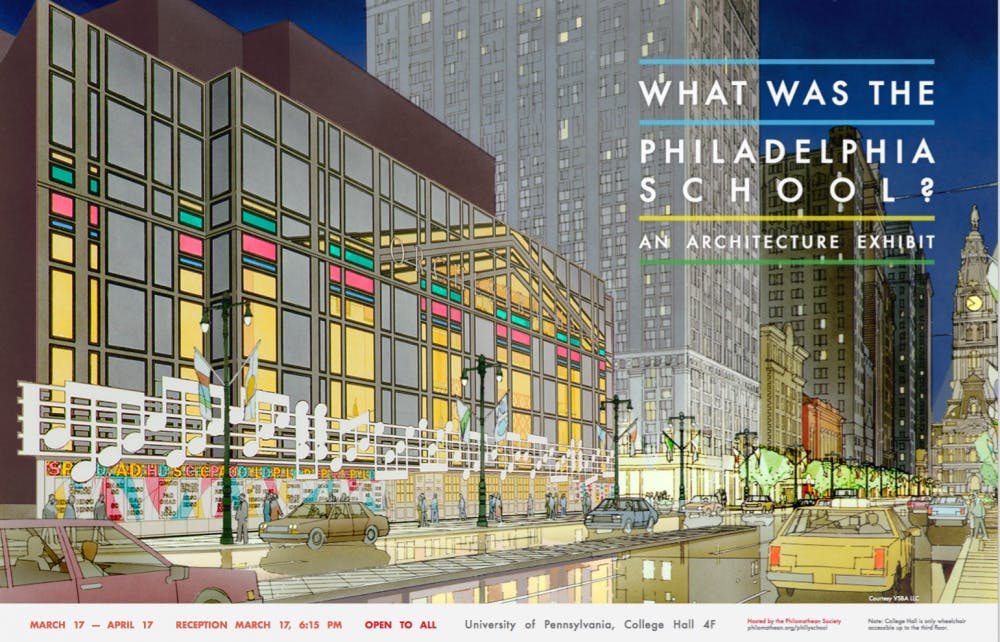The Penn Mutual tower, designed by the architecture firm Mitchell/Giurgola, overlooks Washington Square Park from Walnut Street. It's a looming structure that is perhaps contradicted by its entryway—the stone façade of the 19th–century Pennsylvania Fire Insurance Company Building. Nothing of this building remains besides its façade, and its inclusion in the design of the larger tower illustrates a larger process of the Independence Mall area—its evolution from a historic settlement to a modern metropolitan neighborhood. This contradiction of the past and the contemporary, or perhaps the coexistence of the two, is a characteristic of a much larger movement in architecture, a movement that found a home in the Philadelphia School.
What Was the Philadelphia School? is a new exhibit open in the Philomathean Art Gallery on the fourth floor of College Hall. Curated by Jason Tang (C ’16) and Izzy Kornblatt (Swarthmore ’16), the show seeks to question the Philadelphia School’s place in architectural history and even its integrity as a school. “One thing this exhibit tries to do,” says Jason, “is highlight the lesser known architects, like Robert Geddes of GBQC, John Rauch of the original Venturi & Rauch and John Bower, whose contemporary influence and prominence has matched that of the more well–known architects like Venturi & Scott Brown, Giurgola, and Kahn.” He argues that these architects, among others, formed a loose coalition that looked to site–specific context in their practice, to social analysis and to the multiple, mechanistic functions of architecture.
The brand of architectural modernism that the exhibit considers is not the modernism of New York, with its tall sculptural towers of monumental glass and metal. “Philadelphia modernism,” Jason explains, “is a lot more modest and a lot more contextual. It’s sensitive—it doesn’t try to scream over older buildings.” He points to Stouffer College House, designed by Geddes Brecher Qualls Cunningham Architects in 1972. Before Wawa took up residence at the corner of 38th and Spruce streets, and before the shops lining Spruce filled in their façades with uniform glass storefronts, one could see the building’s close attention to context. Its uniform segments easily conjured a reflection of row houses—an icon of Philadelphia architecture.
And how does the Philadelphia School’s influence permeate the present? The recently completed Evo at Cira Centre South, a residential tower that overlooks the Schuylkill, proves the school’s continued influence. Though from the exterior it might seem to be the sort of blue–sky–reflecting monolith one imagines when thinking about what a city looks like, subtle qualities in Evo’s design reflect ideas championed by the Philadelphia School. Take the very bottom of the tower, where the glass is pulled back almost like a table cloth to reveal the more austere and cement–pillared underbelly of the building. This inclusion emphasizes the building’s mechanical nature, its function as a complex machine—a central tenet of the Philadelphia School, as the exhibit explains.
Despite the seemingly clear connections between architects and practices demonstrated by the exhibit, the Philadelphia School has struggled to gain recognition as a true school, as something more than just a haphazard group of architects without much linking them together. What Was the Philadelphia School? hopes to dispel these trepidations firmly. Jason asserts, “We wanted to show that it was more about ideas, about aesthetics.”

